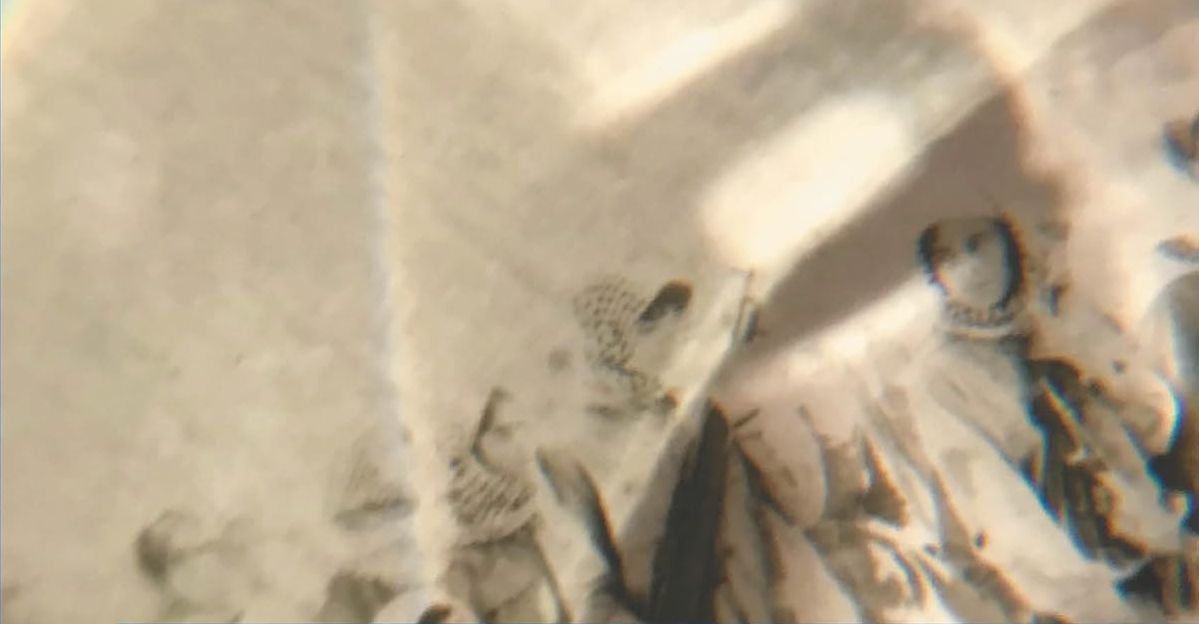 Armadillo
Armadillo
Director: Janus Metz
★★★★
Janus Metz’s Armadillo takes its name from a forward operating base in Helmand province. The documentary focuses on a platoon of Danish soldiers and their deployment from February to August 2009. The impression given of the Afghanistan War during their tour is a war by inches. The Taliban are less than a kilometre from the base and throughout the film the troops fight over and win and lose a few tiny villages and farmland. In this stalemate the Taliban seem to have the upper hand: the stalemate being a goal in itself.
Some of the footage is extraordinary. I think it is a combination of the cameraman in the field as well as cameras attached to the helmets of select soldiers. This makes for scenes where it is at times difficult to know what is happening, and always impossible to know where the enemy is, but in this way the audience is thrown right into the unpredictable realities of modern warfare. I hate to say fog of war but it is damn confusing and, at times, frightening for a viewer and it must be unimaginably worse for participants.
Embedding journalists or filmmakers in a unit can be dangerous because they only see what the commander allows, sympathise with the soldiers and wind up telling a military-approved story. While this is the situation in Armadillo, it feels as though nothing has been censored. We see the war in all its horror, the horror, because that is the soldier’s experience. On release the film triggered an inquiry by the Danish military into the soldiers’ actions, so it seems unlikely Metz had any outside influence. (The inquiry was over how the soldiers dealt with wounded Taliban. They were found to have committed no wrongdoing.)
Metz doesn’t spend much screen time trying to make the audience sympathise with the soldiers. With their families yes, but the soldiers are shown in a particularly harsh light. Instead, Armadillo focuses on the trauma of these men, of the occupying force. In this way it is similar to The Hurt Locker, probably the most popular and critically acclaimed account of America’s most recent wars. The films’ similarities end there. Kathryn Bigelow’s film uses the trauma of the occupier to distract from the ideological reasons for the Iraq War and to obfuscate the Iraqis’ trauma. (For more reasons why The Hurt Locker sucks check out this great article by Slavoj Zizek.) In Armadillo the soldiers feel the need to justify the trauma they perpetrate. We see the cold rationality necessary to take life, be it wounded Taliban or trying to persuade a comrade he did nothing wrong in providing the coordinates to mortar and kill a little Afghan girl. And perhaps it isn’t individual error, it’s the military system that provides these protocols and sees no problem with the results.
While the film centres on Danish soldiers we see how the war affects their families and Afghan civilians. Afghans regularly tramp out to the base to complain about their losses: personal affects, homes, livestock, family. In return they get a few thousand in monetary compensation. The only ones who are invisible are the Taliban, who are invisible to the soldiers too. Except for when they confirm their kills anyway.
It’s interesting to note that in Armadillo the soldiers don’t reminisce about their sweethearts in Denmark and only once are their lives back home discussed at all. Not at all good War Movie practice. They don’t use conversation to distract themselves from reality; they use it to justify their conduct, express boredom and desire for more action. Of course this could just be due to Metz’s editing.
The editing is aesthetically stunning considering the circumstances of filming. But it and the inter-titles are a bit messy and slightly confuse whose events unfold in this otherwise superb and brutally honest documentary. But then, Afghanistan is a bit messy.
A short Israeli-Palestinian film called Susya, directed by Dani Rosenberg and Yoav Gross, preceded this screening. Susya refers to the setting where, twenty-five years ago, the Israeli government forcibly removed the Palestinian inhabitants so it could excavate and create the archaeological site it is today. The documentary tells the story of a Palestinian father and son revisiting the village for the first time since their ejection. They buy a ticket at the entrance and become tourists in their own town. The film contrasts the official Jewish history of the site with the father’s recollections about the village he once knew. Recollections which the tourist site refuses to acknowledge and in the end this competing version of history is forced off the stage. Susya is a poignant and depressingly accurate allegory for the relationship between the Israeli state, Palestine and its people.
 The Tree of Life
The Tree of Life
Director: Terrence Malick
★★★★★
I didn’t think a film could get much more inaccessible, in the same day at least, than Le Quattro Volte. That was, until Terrence Malick’s 138-minute opus spurred into life before me. The Tree of Life is a near impossible film to review. Watch it and within five minutes you’ll know if you hate it or can endure the rest.
Over the past forty or so years and five feature films, Malick seems to have been moving more and more towards The Tree of Life. His meandering philosophical voiceovers and imagery ostensibly unrelated to plot reaches what may be its apex in this film. Malick tells three stories at once: the creation of the earth, a 1950s family drama focusing on the relationship between father and son, and that son’s later existential crisis set in our time. That, however, is blatant simplification. Malick moves through these complimenting, not competing, narratives with deft fluidity. Even the individual stories are not chronological; Malick jumps through images and scenes with little recourse to cause and effect. The way time, or lack there of, is handled in the film is probably the best I’ve seen in cinema. It’s Proustian in both narrative dexterity and in the examination of Jack’s (Sean Penn) memory. Proust references aside the film is a truly cinematic experience. Malick uses everything cinema offers to impart an epic not confined by linear time. (This is in contrast to most films, which still use the basis of the novel and its techniques – dialogue, plot and so on – to relate the story.)
The Tree of Life’s complexity requires strong characters and themes to tie the film together, and it delivers. Brad Pitt is fantastic as the ultra-masculine, power-driven father Mr. O’Brien. The child actors, especially the amusingly named Hunter McCracken as Young Jack, are very impressive. Thematically, to me, the film was about the existential crises of a variety of characters in different times. In their grief-inspired turmoil the characters question the existence of God, memory, family, the American Dream and, of course, why we are here.
Malick rolls between these narratives and themes with truly masterful editing. For a film that is so gargantuan in scope and long and ponderous it is surprising just how rapid the jump cuts are. In some sequences, namely in the cosmos and in brief moments of magical realism, I didn’t quite know what I was watching or why or how it was made, but I didn’t mind in the least. The cinematography was so obnoxiously good and the soundtrack so bombastic it didn’t matter.
The Tree of Life has been criticised for being bloated and setting out to achieve something it was always going to fail at: the meaning of life. The somewhat unexpected life-affirming ending may also bother atheists. But if you can give yourself up to Malick’s guidance, the exploration of this impossible topic will be worth every baffling shot of dinosaurs and cell mitosis.


